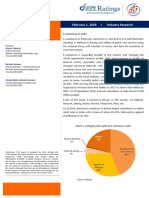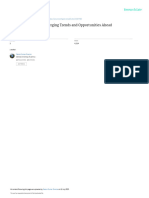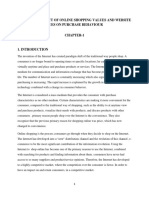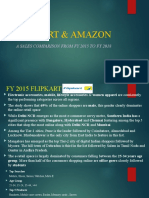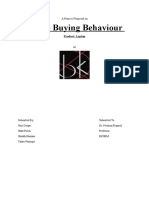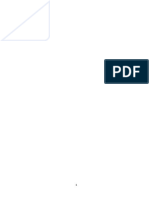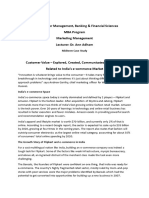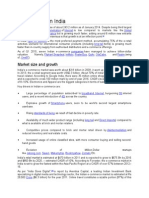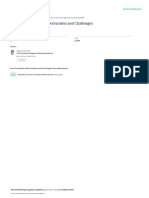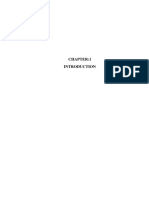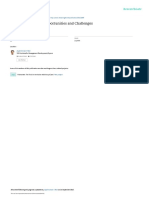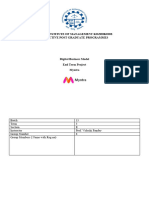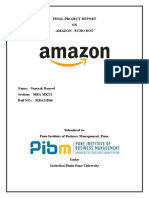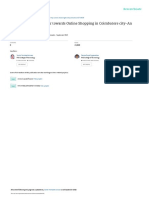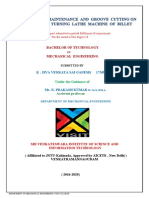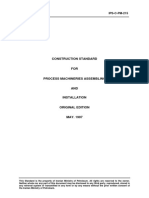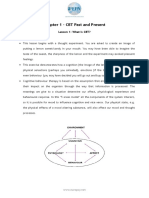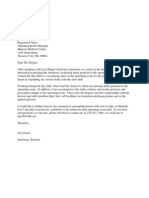Assignment #5 - The Scarcity Model
This is a short study and report on whether I believe a scarcity apparel retailer like Zara* or a flash sales
apparel retailer like Vente Privée is or is not an attractive opportunity to start in India today.
* Zara is active in India
I. - A Market of Buyers
I.A - Macro View: Size, demographic, etc.
In a Digital India 2019 report, the following numbers are cited:
Population 1.361B
Mobile Subscriptions 1.190B
Internet Users 560.0M
Social Media Users 310.0M
Mobile Social Users 290.0M
India has the fastest growing online retail market among top global economies. The country’s online
retail market witnessed a compound annual growth rate (CAGR) of 53% for the period 2013 to 2017.
With a staggering 560 million internet users, Indian internet users are still only 41% of the total
population of 1.36 Billion.
Gross Disposable Income data was reported at 131,525,002.483 INR mn in Mar 2018 an increase from
the previous number of 119,566,177.097 INR mn for Mar 2017. With an ‘emerging middle class’
population of more than 500 million and approximately 65% of the population aged 35 or below. The
Indian e-commerce market will exceed 100 billion USD by 2022.
Finally, since 2014, the Government of India has announced various initiatives namely, Digital India,
Make in India, Start-up India, Skill India and Innovation Fund. The timely and effective implementation of
such programs will likely support the e-commerce growth in the country.
I.B - Micro: Who is your customer?
Indians are rapidly getting used to e-commerce and its convenience, and they primarily use mobile
devices to access the internet and shop online for a growing array of goods and services. On the Micro
level, we could assert that for a quick flash sale purchase cycle would be privileged by cash availability.
Customers who have access to an increasing disposable income as well as increased availability of
credit and use of ‘plastic money’ leads to more demand for discretionary items like fashion apparels,
home décor etc.
The population aged 25-39 have the highest ’collective’ gross income. In the coming five years, this age
group will continue to have the highest gross income in India. As far as this segment is concerned,
studies show that:
- Shopping becoming an experience, not a necessity
- Higher income levels are increasing the interest in brands
- Shopping for discretionary items is therefore more of an entertainment
- Brand consciousness and demonstration effect supports retail sales to a large extent
Page 1 of 3
�Indians are perceived as having an impulsive buying behavior and men a huge online buyers of fashion
goods.To cater to their needs, e-commerce players need to innovate across the value chain through
initiatives such as custom assortments, targeted marketing, local language content and online-over-
offline (OOO) infrastructure.
Retail ecosystems comprise communities of consumers, retailers and partners that rapidly reshape the
retail landscape. They deliver a very sticky consumer proposition by combining services like e-
commerce, chat, streaming etc.
II - Industry - The Competition and Trends
II.B - Macro side - The Competition
As we have seen in the short demographic and psychographic overview Indians have an increasing
Buying Power (on of Porter’s 5 forces). When we look at the Industry on a macro level we can detect that
although the market shows lots of pace for growth, the incumbents are very aggressive, suppliers are
well served and represented.
On the Fashion/eCommerce level, the most important competitors and actual threats to new entrants
are:
Myntra/Jabong
Myntra is a specialized online fashion, home and lifestyle retailer in India. Launched in 2007, Myntra has
developed a strong online presence, especially through its mobile applications. Acquired by the Indian e-
commerce company Flipkart in 2014, Myntra has consolidated its presence in fashion e-commerce
through the acquisition of its competitor jabong.com.
Flipkart
Flipkart is the national leader of e-commerce in India. Founded in 2007, Flipkart was initially selling
books, before it expanded to other popular categories including mobile phones, electronics, fashion and
lifestyle products. In 2018, Walmart, one of the largest American companies and leading platforms of e-
commerce in the US, acquired 77% of Flipkart for 16 Billion US $.
Snapdeal
Snapdeal is a diversified online shopping platform, offering products ranging from electronics and
fashion to home and appliances. Founded in 2010, Snapdeal has received several rounds of funding
from famous investors, including Alibaba Group, Foxconn and SoftBank, to fuel its growth and compete
for the top spots in India’s e-commerce landscape.
Darveys
Darveys.com is India's largest platform to buy authentic luxury brands at up to 60% off with currently
20,000+ items live on the website from 125+ luxury brands by 800+ authorised boutiques/stores. Their
software finds the stores which are selling a particular item across the globe at the lowest price available
and facilitates the sale for that item from the authorised store of the brand selling the item at the lowest
price possible.
Zara/Trent
Zara adopts a ‘Fast Fashionʼ supply chain model delivering in just 2 weeks, compared to 6 month
industry average. They operate a vertical supply chain, so they themselves undertake everything from
design, manufacture, sourcing and distribution. This allows them a high control over the business.
In accordance with Indian regulations on foreign direct investment (FDI), the Spanish fast-fashion retailer
partnered with the Tata Group to form a joint venture in February 2009. Inditex owns 51 percent of this
partnership while Tataʼs subsidiary Trent Limited holds 49 percent. The main concerns that Zara had wile
entering into the Indian market were Demography and cultural concerns.
Page 2 of 3
�Voonik, Zivame, Limeroad, koovs, AJIO
These are other yet smaller incumbents.
Marketplaces
There are several big marketplaces in India led by Amazon India. These are to be mentioned since they
give access to smaller and even micro sellers/businesses.
II.B- Micro: Of trends and competitiveness
According to a study done by Adobe, the new imperatives in the Indian market could be summarized by
3 rules:
1. Traffic Mix And Engagement
Indian e-commerce companies have primarily focused on increasing traffic to their domains to grow
sales and revenue. Although this is largely true for any business in any country, it makes a lot of sense
for e-commerce in India, where only a quarter of the population shops online. In 2018, roughly 80% of
the traffic to Indian e-commerce websites was a combination of direct traffic (42.3%) and referral traffic
from search (36.4%), with social media making up 9.3% and other sources covering the rest, according
to an internal study by Adobe’s Digital Strategy Group. These trends signal a shift in the value of owned
media versus paid media and, more importantly, the importance of driving sustained business growth
through a great digital experience.
2. Shifting Product Discovery Patterns
Another growing trend is a change in how consumers discover products.These days consumers often
start their product purchase cycle directly at the e-commerce portal of their choice. This consumer
behaviour is also reflected in advertising analytics.
3. Vernacular Content And Voice Searches
As more and more Indian smartphone users gain access to low-cost Internet, there is a greater demand
for content in local languages. Indian consumers have enthusiastically adopted voice search. Twenty-
eight percent of all search queries are now done through voice, with voice searches in Hindi growing at a
whopping 400% year-on-year growth. This underscores the massive opportunity to engage regional
audiences through vernacular content.
III - Conclusion
To conclude on the question of whether a scarcity apparel retailer like Zara* or a flash sales apparel
retailer like Vente Privée is or is not an attractive opportunity to start in India today. I would answer a
stark NO.
Being very entrepreneurial in nature and seeing the huge market that India represent. I would be very
weary about the threats that the incumbents would represent in terms of potential to block entry and the
amount of cash require to start and maintain the startup until a critical mass is attained, if it is ever
attainable.
I strongly believe that because the SCARCITY/FLASH sale model can be so easily Imitate, Value and
Rarity could be difficult to be delivered because of the strength of the existing businesses having a
strong Organization.
A Discounter of Discounters
The only possible venue that I can detect would be a model in which discounters not suppliers could
partner with an eCommerce platform that could provide the rarity/flash sale model for their remaining
unsold inventory.
Page 3 of 3

